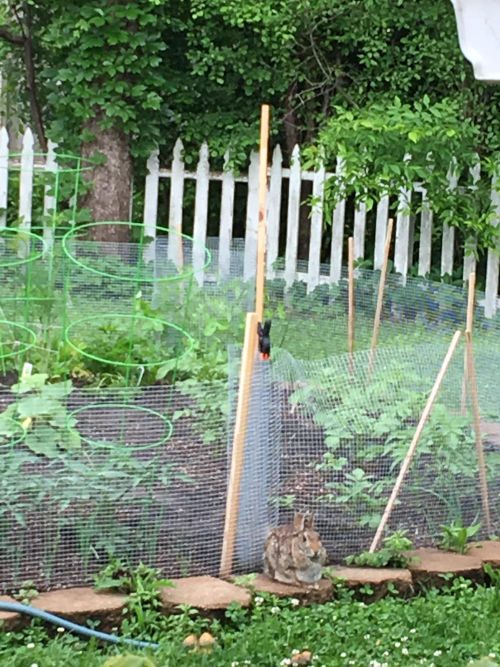I’m getting ready to leave for the airport, and Mary sends me a photo from home. She’s been working hard at a garden in the backyard, and I helped put up a crude fence around it. We did a good enough job. Look at that frustrated bunny, excluded from the carrots and squash and who-knows-what-else Mary planted.
It’s probably scheming to tunnel under the flagstones, though.





